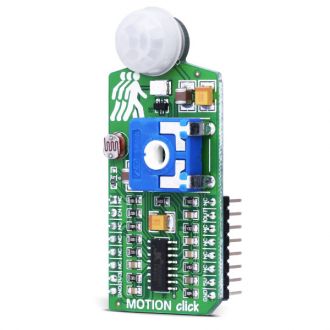
We strongly encourage users to use Package manager for sharing their code on Libstock website, because it boosts your efficiency and leaves the end user with no room for error. [more info]

Rating:
Author: MIKROE
Last Updated: 2018-05-23
Package Version: 1.0.0.1
mikroSDK Library: 1.0.0.0
Category: Motion
Downloaded: 8581 times
Followed by: 1 user
License: MIT license
Motion click is a simple solution for adding an infrared motion detector sensitive only to live bodies to your design.
Do you want to subscribe in order to receive notifications regarding "MOTION Click" changes.
Do you want to unsubscribe in order to stop receiving notifications regarding "MOTION Click" changes.
Do you want to report abuse regarding "MOTION Click".

